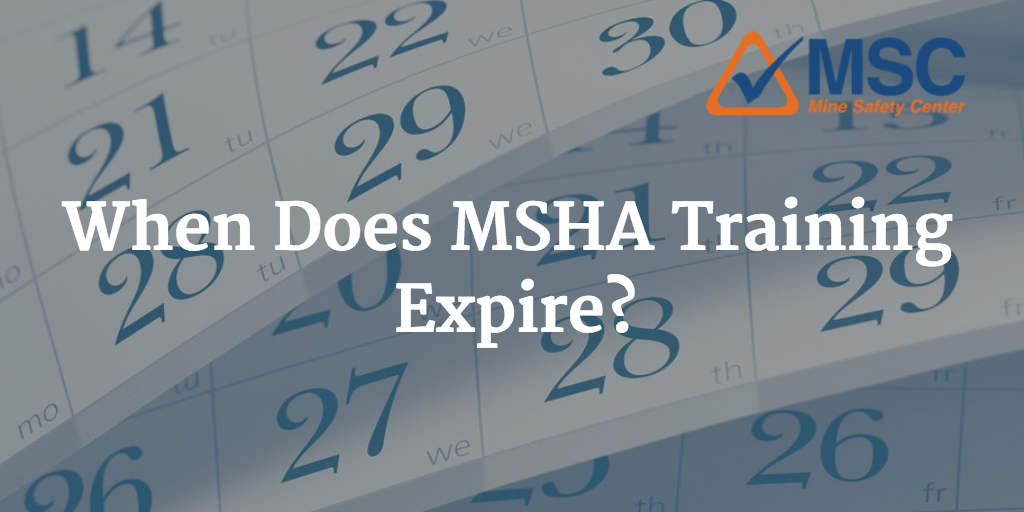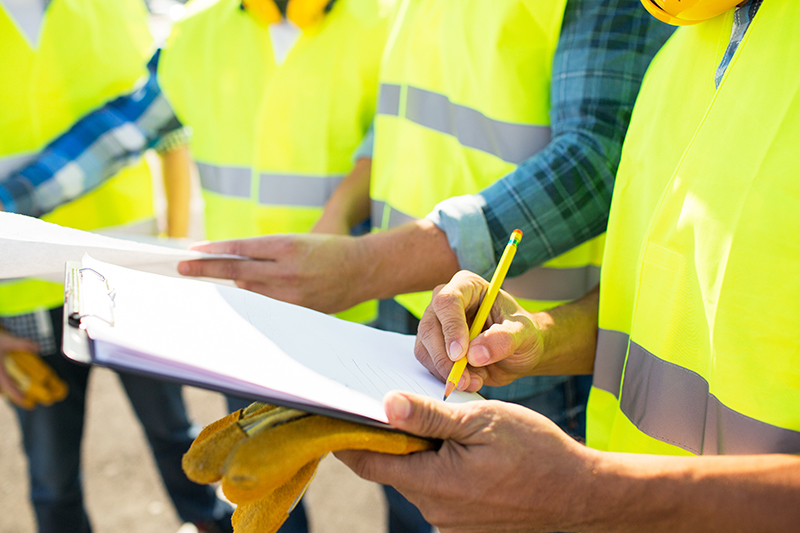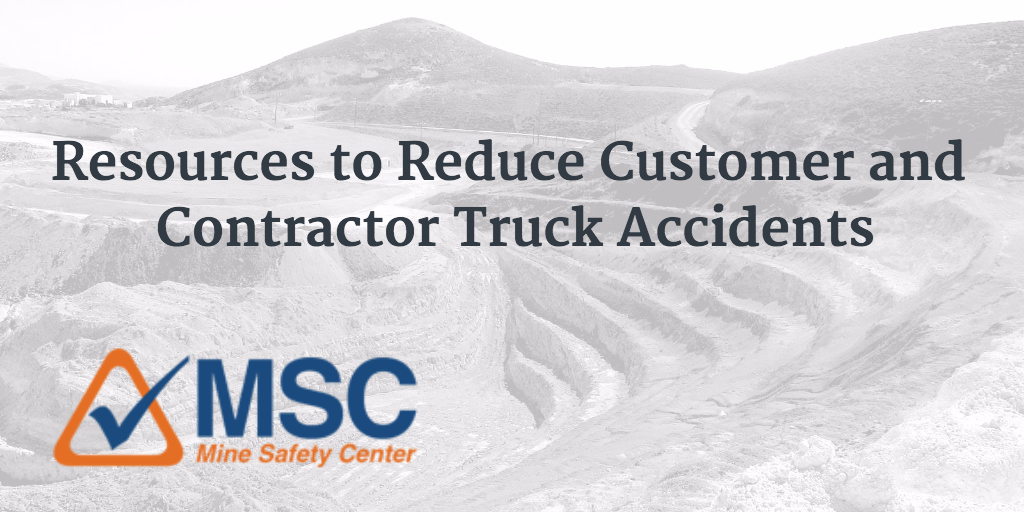
MSHA Part 46 Online Training Saved This Busy Contractor’s Time
Bill McCasey of Swan Electric, Inc. needed MSHA Part 46 Online Training as soon as possible for a job. But they needed a flexible training schedule to avoid shutting down their main business. Swan’s manager decided that online training was the fastest, most affordable way to fulfill their training obligations.
Swan needed their MSHA Part 46 online training company to meet 5 requirements:
- 24/7 access to training that could be done on their schedule
- Assistance with MSHA’s complex paperwork
- Trustworthy, high quality training
- Management tools to ensure all their employees finished the training on time
- The best value for their money
After thoroughly researching their options, Swan decided the Mine Safety Center’s online Part 46 training met all their needs. Why?
Training was available 24/7 to all Swan Electric employees, anywhere with an Internet connection. They could sign up a new employee in less than 5 minutes and start their training any time. Their employees could even stop and start modules as needed. Through MSC’s management reporting tools Bill was also able to remotely track his employee’s progress to make sure they completed the training on time.
Bill and his employees also took advantage of MSC’s Free Automated MSHA Training Certificates. When each employee finished their course, the system automatically completed nearly all of the necessary paperwork and provides employers with electronic training records. This dramatically reduces the opportunity for human error and the MSHA fines that can result.
Bill knew the training covered all the necessary topics to safely be in site and meet requirements because the training was designed by Kim Redding, a former MSHA inspector and top mine safety consultant.
Swan Electric was able to fulfill all of MSHA’s part 46 training requirements quickly with zero downtime and correct paperwork.
Does MSHA Training Expire? Yes, But…
“Does MSHA training expire?” It’s one of our most asked questions. The short answer is yes. But as with most government rules there are exceptions and nuances. To remain compliant you must take Annual Refresher training every year.
The rules differ on how long you can go without taking Annual Refresher without starting from scratch. Depending on what the mine operation is pulling out of the ground you either need Part 46 or Part 48 training. Need a refresher on 46 vs. 48? You can learn the difference between Part 46 vs. Part 48 here.
MSHA Part 46 Training
Part 46 certification must be renewed every year with an 8 hour Annual Refresher training. There is a small amount of wiggle room. The training does not expire after exactly 365 days. You are compliant until the end of the calendar month one year after your last Annual Refresher training.
Need to read that again? Welcome to MSHA regulations. Let’s try that in plain English. If you finished your MSHA training (training complete, with the certificate signed and dated) on January 3rd you have until the following January 31st to finish your next Annual Refresher training. Or you could make your life easier and use Mine Safety Center’s online MSHA training. Our system will send you an email 60 and 30 days before your MSHA training is due.
Want more MSHA compliance tips from a former MSHA inspector? Download our Free Contractor Success Ebook. You’ll get the info and forms you need to get up to speed.
Does MSHA training expire completely if you don’t finish within the 1-year window?
No. You are no longer certified to go on a mine after 1 year-(ish) and you will need Refresher training if you plan on working on a mine during that year. But Part 46 training doesn’t fully expire until 2 years after your last MSHA training. At this point, you don’t need to start New Miner training from scratch.
This can be useful for contractors. If you don’t have a mine contract one year you do not need to spend the time or money to take MSHA training. But you will need to make a choice at the end of the second year. If you or your employees don’t take a Refresher Training within 2 years you will need to re-take your 24 hour New Miner training and re-complete your New Miner Training certificates.
Part 48 MSHA Training
All of the above rules stay the same if you are working on a Part 48 surface mine.
But underground Part 48 mines have different regulations.
30 CFR Part 48 states that an individual who receives 40 hours of training and works for 12 months as an underground miner is considered an “experienced miner.” MSHA rules require any experienced underground miner who has been away from mining for more than five years receive 8 hours of “experienced miner” training before returning to the mine.
You will need to re-take 40 hours of “new miner” training from a blue card certified trainer if you do not have the 12 months of mining experience. Some States have additional training requirements for miners. Contact the appropriate agency in your state to learn if this applies to you.
So, does MSHA training expire? Yes, but the rules change depending on your specific situation.
One Last Thing
It’s essential to accurately complete your certificates and hold on to your training records, especially your New Miner certificate. There have been instances where contractors lost their New Miner certificate and were forced to completely retake their 24 hour training. For MSHA the proof is always in the paperwork. You can ensure your paperwork and company are MSHA compliant by downloading the Contractor Success Kit. This free Ebook walks you through the MSHA compliance step-by-step to make sure you’re protected.
Need more MSHA compliance info? Download our free Contractor Success Ebook.
Standard Operating Procedures
It’s the worst-case scenario. Someone has been injured at a job and your employees need help. But you’re working a mine on this job; a mine with multiple locations, different addresses with the same name and no Standard Operating Procedures to guide you.
Your workers have 911 on the line, ready to help. But they don’t know which site they’re on or how to get to their location. They have an injured man’s rescue at their beck and call but no way to help.
Sound far-fetched? This would never happen at one of your jobs? This unfortunate event happened to one of my contracting clients. 2 of their employees had 911 on the line. But instead of being able to assist in his rescue, they witnessed a man die of a heart attack right in front of them.
What could these contractors have done to prevent this tragedy? They needed directions to their location of the physical address of the mine site to get help from Emergency Services. Anyone in the company could have easily gotten this information by asking a few simple questions before they started work.
Is using a map app on your smart phone an option? That’s a risk I’m not willing to take. Many mines are in extremely remote areas. Reception can be spotty or non-existent. Why chance it when you can easily avoid a tragedy by asking 1 question?
Can’t 911 just track your phone’s GPS location like in a TV crime show? No, there are Federal privacy laws in place that prevent Emergency Response from accessing GPS information. If you can’t articulate your location, there’s nothing a 911 operator can do.
One advantage these contractors had was cell phone reception. But what if they didn’t? Would they have known where to get a signal? Or have another form of communication available like a CB radio?
Standard Operating Procedures, or SOPs, are a safety net in place for that worst-case scenario. So I need to ask; do you have standard operating procedures in place for your mine jobs? Do you have emergency procedures for each mine you service?
If you don’t you’re not alone. But these simple procedures on a checklist can save a life.
What are the standard operating procedures your company must have in place? I’ve designed a 3 page standard operating procedure template checklist available as a free download as part of our Contractor Success Kit.
There may be procedures that don’t apply to your company and that’s ok. This checklist is meant to be a starting point, a framework to build on. Designing standard operating procedures is about asking the right questions so you can be prepared if something does go wrong.
The worst-case scenarios may never happen, and we hope they never do. But if a tragedy does occur and you’re in a position to make a difference, don’t you want to be ready? You can. All it takes is a little time and thought to implement standard operating procedures at your company today.
Mining Truck Accidents Can Be Reduced
Have contractors or customers caused mining truck accidents or a near miss on your site? Are aggregate haulers climbing on their trucks at your mine? Do drivers outside their trucks pose a hazard at your mine? Do you have difficulty managing these outside truckers?
Following established rules and procedures is essential to reduce mining truck accidents and other unsafe incidents. These rules and procedures also apply to customers and contractors but are sometimes forgotten because these drivers are not on a mine as often as mine employees.
The Mine Safety Center has teamed up with CalCIMA to produce free materials to teach a few simple ways to stay safe on a mine. “The training materials include signs that will warn drivers of the most common customer truck hazards at mine sites,” said Mike Herges, safety manager at Graniterock and a co-chair of CalCIMA’s Safety & Health Committee. “We hope mine operators embrace these warning signs and they become the standard at all mines,” added Herges. The training materials include a video, postcard, and brochure that incorporate the warning and caution signs. They provide operators a variety of formats to reach drivers, brokers, and fleet managers.
Mine Safety Enforcement To Be “Beefed Up”

In the wake of five metal / non-metal fatalities in the last three weeks, including 3 on August 3rd, the Mine Safety and Health Administration, or MSHA, announced that inspectors will step up enforcement beginning next week.
During a hastily arranged conference call of stakeholders Wednesday, agency administrator Joe Main lamented the fact that, since October, 2014, 38 miners and 14 contractors have lost their lives at their workplaces.
During the call, MNM administrator Neal Merrifield said that 17 coal inspectors are being switched over to work in the MNM segment. Also, Merrifield has authorized the hiring of an additional 21 inspectors. MSHA also indicated that those mines found to not be following mine safety best practices associated with the standards found to have been relevant in the fatalities will be subject to impact inspections. At the call’s conclusion, Main said he realizes that many small mines are involved in the problem. This would indicate a heightened focus on “mom and pop” outfits.
In a letter to the mining community, MSHA’s Joe Main said, “To reverse this unacceptable trend, the Mine Safety and Health Administration is stepping up enforcement efforts and intensifying outreach and education throughout the country.”
Key points:
- MSHA will increase the number of inspectors and inspections at metal/non-metal mines, beginning on 10/1. These will include “walk & talk” meetings with operators and miners.
- Heightened focus on smaller “mom and pop” mines
- MSHA emphasizes the need for thorough workplace exams each shift that are performed by experienced and trained examiners, per the recent program policy letter.
- Inspectors will be closely scrutinizing workplace exam paperwork.
- MSHA re-iterates the importance of safety and health programs, per Joe Main’s May 21 letter to the mining community.







